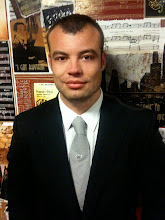Published in the May issue of the Journal of Foot and Ankle Surgery:
The Abstract reads as:
This collaboration of specialties represents an undertaking by members of Freeside Atlanta, Southern Arizona Limb Salvage Alliance, and The Podiatry Institute. Charcot foot reconstruction remains on of the most challenging procedures in foot and ankle surgery. These procedures are often lengthy procedures which can be riddled with complications.
With the help of Freeside Atlanta Members, institutional researchers used open source Osirix Image viewer and 3D Software such as Newtek's Lightwave or Blender to create simulated surgical reductions as well as 3D printed templates. Freeside Atlanta members assisted in providing 3D printing solutions and know-how to the project.
Experimental test prints were done on a Makerbot Thing-o-matic, and final templates were printed on a modified ZCORP z400. These templates were full scale replicas of the patient's boney anatomy, which were used in the laboratory for practice purposes. (see video below)
The surgical bone cuts were trialed in advance and the the Ilizarov fixation frame was constructed and modified prior to surgery. The combination of these two things saved the surgeons literally hours of work in the operating theater, ultimately lowering cost of care and risk of complications.
With the help of Freeside Atlanta Members, institutional researchers used open source Osirix Image viewer and 3D Software such as Newtek's Lightwave or Blender to create simulated surgical reductions as well as 3D printed templates. Freeside Atlanta members assisted in providing 3D printing solutions and know-how to the project.
Experimental test prints were done on a Makerbot Thing-o-matic, and final templates were printed on a modified ZCORP z400. These templates were full scale replicas of the patient's boney anatomy, which were used in the laboratory for practice purposes. (see video below)
The surgical bone cuts were trialed in advance and the the Ilizarov fixation frame was constructed and modified prior to surgery. The combination of these two things saved the surgeons literally hours of work in the operating theater, ultimately lowering cost of care and risk of complications.
 |
| 3D simulations were used for templating surgical approach on printed replicas. |
 |
| Intra-operative execution of practiced surgical plan. |
 |
| Application of Ilizarov External Fixation Construct |
The Abstract reads as:
Charcot foot syndrome (Charcot neuroarthropathy affecting the foot), particularly in its latter stages, may pose a significant technical challenge to the surgeon. Because of the lack of anatomic consistency, preoperative planning with virtual and physical models of the foot could improve the chances of achieving a predictable intraoperative result. In this report, we describe the use of a novel, inexpensive, 3-dimensional template printing technique that can provide, with just a normal printer, multiple "copies" of the foot to be repaired. Although we depict this method as it pertains to repair of the Charcot foot, it could also be used to plan and practice, or revise, 3-dimensional surgical manipulations of other complex foot deformities.
Copyright © 2012 American College of Foot and Ankle Surgeons. Published by Elsevier Inc. All rights reserved.

Comments
Post a Comment